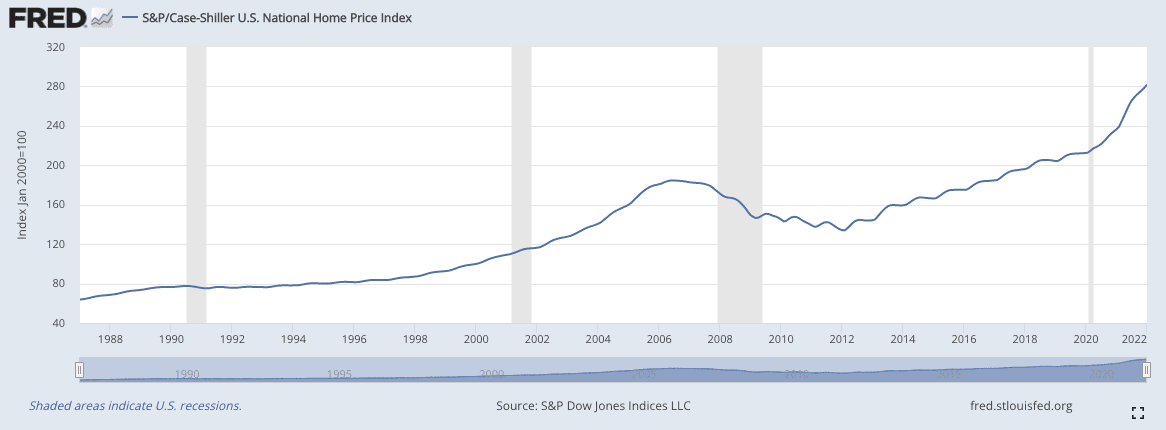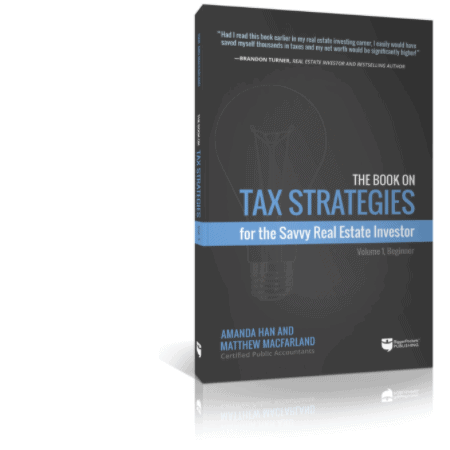If you haven’t noticed, there really hasn’t been a better time to sell a property.
The Case-Shiller Index rounds out to about 282 points as of late January, and median home prices rose 15.9% year-over-year in February.

Add in the fact that sellers are receiving multiple offers within a few days after listing and you have all the right ingredients to start a bidding war, increase the price of your property, and walk away with more than you could imagine.
But, there is an issue. Taxes.
It’s great seeing the price tag of your property increase, but that also means your tax bill will be significantly higher. If you want to take advantage of the appreciation your current investment has earned but don’t want to get hit with the corresponding tax bill; you might want to consider some of these 1031 exchange strategies the top investors are using to navigate the seller’s market.
Why use a 1031 exchange?
With a 1031 exchange, you can shelter your gains from being taxed by following up the sale with another real estate investment of equal or greater value. If you follow the rules set by the IRS, your real estate investments can grow tax-deferred.
The challenge of using a 1031 exchange in a seller’s market
These days, the most challenging part of executing a 1031 exchange is finding the replacement property within 45 days of closing the sale on the former property.
As we discussed earlier, sellers are enjoying the luxury of bidding wars and sky-high prices. Investing in today’s market is much more challenging. Deals are hard to find, and you can’t guarantee that the property you want will fall into your hands.
The good news is that once found and placed under contract, the IRS grants an additional 135 days to finalize the purchase before the 1031 exchange is no longer eligible.
1031 exchange strategies
The best way to execute these 1031 exchange strategies is to have a plan before the property you’re selling is placed under contract. It’s the time of closing that determines 1031 exchange eligibility, so you’ll need to know your available routes before this date.
You don’t need to have the ball rolling on a second property while your current is under contract. Not everyone is comfortable going after the replacement property before their original sale closes—even with contingencies. Make sure to determine your risk tolerance and only take action that lets you sleep at night.
The four 1031 exchange strategies we’re going to talk about are based on where you’re currently at in the sales timeline. Those are:
- If you haven’t listed your property yet
- If you’re already under contract
- If you’ve already closed
- Use a reverse exchange

Dreading tax season?
Not sure how to maximize deductions for your real estate business? In The Book on Tax Strategies for the Savvy Real Estate Investor, CPAs Amanda Han and Matthew MacFarland share the practical information you need to not only do your taxes this year—but to also prepare an ongoing strategy that will make your next tax season that much easier.
If you haven’t listed your property yet
The first strategy is to negotiate the closing of your sale in a way that keeps you in the driver’s seat. If you can find a friendly buyer, this is the simplest way to do a 1031 exchange.
A buyer willing to wait for you to conclude your property search is the best-case scenario, but if you can’t find someone willing to wait, you need to research a few things.
First, find data on your market and examine the average days on market (DOM). This number will let you know how long you have to find another property or even the leverage you have over selling your own.
You can source this data through Zillow, Redfin, or Realtor.com. Or, get in touch with a trusted local real estate agent in your area who can provide highly accurate data using the multiple listing service (MLS).
You could also ask other real estate investors what their past month has looked like in your area.
Based on what you find out, here are the following options you have:
- Delaying putting your property on the market until after you find a replacement.
- Negotiate an extended sale date with the option to accelerate.
- Add a contingency clause to the offer that makes the sale dependent on you finding a suitable replacement within a certain amount of time.
- Add the option to extend closing by 15-30 days or more.
If you’re already under contract
If you are already under contract to sell your property, you can still take action to meet your 45-day identification deadline.
The goal is to begin making offers as soon as possible. The difficulty in a seller’s market is that buyers have little to no leverage. If you can’t meet the seller’s terms, they can simply choose another offer. So you’ll have to be smart.
You have a few paths to take here:
- Consider making offers contingent on your sale (the odds of this working is extremely low in a seller’s market, but it’s worth trying on a couple of properties).
- Ask for an extended closing (I suggest two weeks after your sale is scheduled. Some of our investors are experiencing lender delays on their sales that disrupt tight closings).
- Try to get an inspection, due diligence, or financing clause that expires a week or two after your sale is scheduled to close.
- Consider a tiered earnest money offer to get one of the above strategies to work. Specifically, offer a solid earnest money deposit at signing with another larger earnest money deposit after your sale closes. Make these refundable or non-refundable depending on your risk tolerance and what the situation warrants.
If you’ve already closed the sale
This isn’t the best scenario to be in, but not all hope is lost. Remember, you still have 45 days post-closing to find a replacement property to execute a 1031 exchange.
But, you need to be fast and efficient in looking for new properties.
If you’ve exhausted your options and spoken to every connection you have who might know about a new deal coming to market, from the local agent to the plumber who always fixes the leaky faucets, you might want to consider expanding your range.
The first thing is to consider dipping into markets outside of your own. If you haven’t been already, you might also want to look at properties that you might not normally invest in.
For instance, if you’re a short-term rental investor but can’t snag a deal, perhaps you should dip into the multifamily market?
Finally, maybe it’s time to look into fractional property ownership structures like a Delaware Statutory Trust or a syndicated tenant in common project. When done right, these types of investments can prove to be lucrative and provide a 1031 exchange outlet.
Use a reverse exchange
If you have found the perfect replacement property but can’t get the sale of your original property lined up in advance, a “reverse” exchange may be a good fit.
A reverse exchange is a more complex exchange structure with a longer lead time, special financing requirements, and a higher price tag. That being said, if you locate a great opportunity, the exchange will defer a significant amount of tax.
A reverse exchange makes sense in a seller’s market as hot as the one we’re in now if you can pull it off.
Closing thoughts
While certainly not the preferred option, it is important to emphasize that there is no penalty for starting a 1031 exchange and not completing it.
If you cannot find a suitable replacement, it would be better to let your exchange die and pay the taxes rather than make a bad investment. In the long run, you’ll regret the bad investment more.
If you have any other 1031 exchange strategies, leave a comment below to share them with the BiggerPockets community!